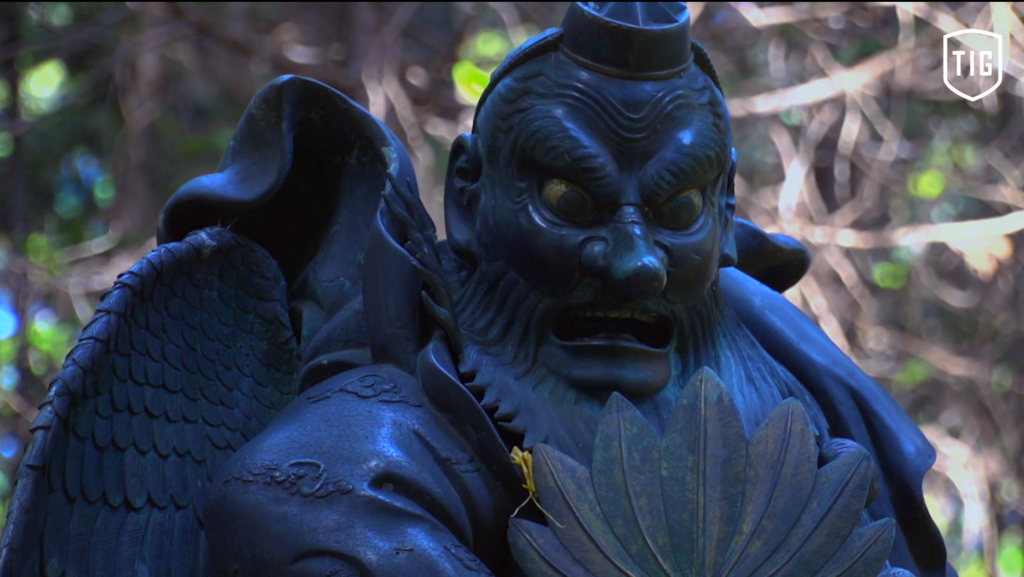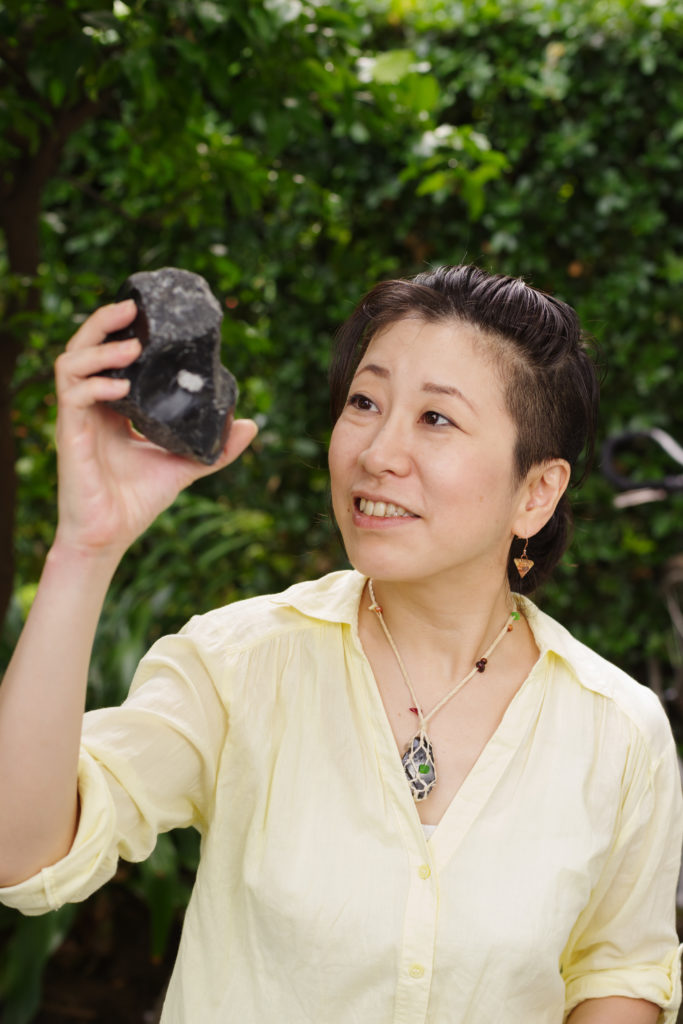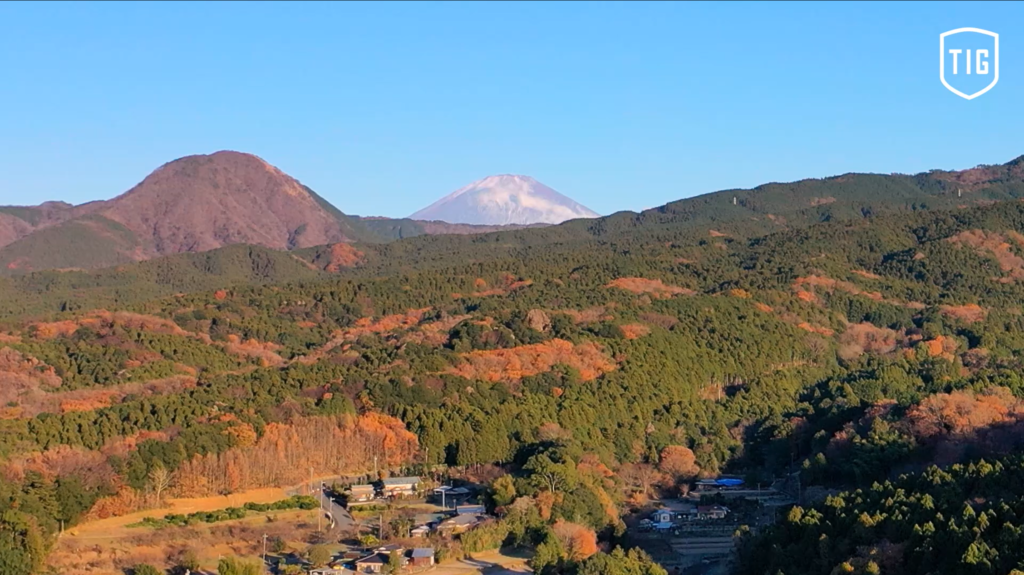- JAPANESE
- LANGUAGE
X
 THAT IS GOOD
THAT IS GOOD
On November 24th, we took a movie with DJ Yogurt at Daiyuzan Saijoji in Minamiashigara City, Kanagawa Prefecture, where the autumn leaves still remain. Saijoji is known as a sacred place in the Kanto region, has a history of more than 600 years since its foundation, and is a very splendid temple surrounded by dense old cedar trees. About 30 mountain gates, temples and treasure towers are lined up in the vast forest of 130 chobu(Approximately 129 hectares), and the area seems to be quiet and powerful. We were looking for a shoot in the beautiful autumn scenery that is typical of Japan, and he kindly agreed that I could shoot anywhere as long as it didn’t get in the way of the visitors. Since it is a good time, we set up a booth under the “barrier gate” that says that this is the purification area of Daiyuzan Saijoji, which is the guardian of Saijoji Temple, and DJ Yogurt showed us the play.

Writer Tomoko Kusakari visited Daiyuzan Saijoji later in the day and wrote a report on Daiyuzan Saijoji Temple and mountain worship based on her interview with Saijoji Temple.
Daiyuzan Saijoji, located in Minami Ashigara City, is known as one of the most famous Zen temples of the Soto sect of Zen Buddhism after Eiheiji Temple and Sojiji Temple, whose founder was Dogen. The temple was founded in 1394 during the Muromachi period (1334-1573), when a high priest named Ryoan Emyo, a member of the Fujiwara clan, was led by a large eagle to build a temple here.
In a nutshell, Saijoji is a training *Dojo for the Soto sect of Buddhism. The temple is located in the middle of a mountain with many giant cedar trees over 500 years old. The sacred and powerful atmosphere of the mountain makes it a perfect place to concentrate on ascetic practices. However, what makes this place stand out is the statues of *Tengu that stand everywhere in the vast precincts, as seen in this video.
*Dojo : A training hall
*Tengu : A long-nosed goblin
At the boundary gate where the turntable is placed, at the Goshinden prayer hall, and at the bottom of the stone steps of the inner sanctuary, there are large and small Tengu with their eyes wide open, glaring sharply at those who pass by. On the side of the main hall, there are high *geta, the shoes of the Tengu, dedicated from all over the country, and a Tengu leaf fan is attached to the temple crest on the roof. In other words, this is also a temple of the Tengu faith.
*Geta : It’s a form of traditional Japanese footwear resembling flip-flops.
Tengu is a red-faced, high-nosed mountain priest who is famous for his divine power and ability to fly freely in the sky, but it is said to have originally meant “meteor” in Chinese, which means disaster. It was in the Muromachi period (1336-1573) that they came to Japan along with Buddhism and became the aforementioned Tengu. This was the period when mountain worship was popularized by mountain priests.
In those days, mountain priests not only practiced hard asceticism in the mountains, but also went down to the villages to teach Buddhism to the people, organized lectures, and acted as guides. On the other hand, *yamabushi were also skilled in medicinal herbs and medicine, and were needed in the lives of people living in the mountains. It is no coincidence that tengu take the form of mountain priests.
*Yamabushi : A monk who lives and practices in the mountains and fields.
The Tengu of Daiyuzan Saijoji is said to be modeled after a real person. That person is a mountain priest named Doryo from Isehara. It is said that he was a mountain ascetic who practiced hard asceticism in the mountains of various places. He became a disciple of Ryoan Emyo, who was the abbot of Sojiji Temple in Ishikawa Prefecture at that time, and trained many disciples at Mitsui Temple in Shiga Prefecture.
There is no shortage of legends of Doryo’s heroism in the Tengu legend that has been passed down in Saijoji.
First of all, when he heard that his master Ryoan was going to build Saijoji in Ashigara, he rushed from Shiga to the respected monk in just one day, crossing mountains and fields. In addition, he demonstrated his monstrous strength during the construction of Saijoji and accomplished the great civil engineering work by himself, crushing huge rocks and cutting down large trees. When Monk Ryoan passed away at the age of 75, he said, “My role is over. From now on, I will stay in the mountains to protect Mt. Daiyu and benefit many people,” he said, and disappeared into the mountains as a Tengu.
Thus, the superhumanly described Doryo was probably a powerful person who was active in all aspects of his life. After becoming a Tengu, Doryo became an immensely popular deity as the guardian deity of Daiyuzan Saijoji.
But wait a minute. As I mentioned at the beginning of this article, this is a training temple of the Soto sect of Buddhism, the founder of which is Ryouan Emyo, and the principal deity is Shakyamuni. Isn’t it strange that Doryo, a mountain priest who became a Tengu, is enshrined as a deity?
However, it seems that it was both the temples and the people who allowed this to happen.
For more than 1,000 years, Japan had been in an era of Shinto-Buddhist syncretism, where indigenous Shintoism and Buddhism were mixed together, until the separation of Shintoism and Buddhism was enacted in the Meiji era. Based on the unique spirit of not distinguishing between God and Buddha, Saijoji Temple set up the Tengu Dogen Doryo as the guardian of the temple as a great deity that embodies the benefits of this world, and many Buddhist priests from Kanagawa, Tokyo, and as far away as Aichi and Hiroshima went to this temple to pray for its benefits.
Incidentally, Saijoji still places the name of Doryo at the top of the temple’s cast list. This is said to indicate that he is not a deceased person. As the first person in Saijoji, his name has been permanently removed from the list, but he is still alive in the hearts of the monks.
Daiyuzan Saijoji is a sacred place watched over by the Tengu, the Doryo Tengu. I wonder how the Doryo Tengu listened to the unprecedented DJ performance that took place in the sanctuary inside the boundary gate. If he is a generous god who says, “God and Buddha can be together,” I’m sure he would have danced and enjoyed the performance.
*References : Naka Uryu “Yokuwakaru Sangakushinkoh” (Understanding Mountain Worship) (KADOKAWA, 21 November 2020)

Tomoko Kusakari
In charge of writing for the Jomon exploration unit “Nawa To Yajiri”.Born in Hokkaido. After working as a copywriter and editing magazines and books, became independent as a freelance editor and writer. Since 2009, she has participated in the NPO jomonism, involved in the planning and production of Jomon-related events, and wrote on the theme of Jomon. Formed “Nawa To Yajiri” with photographer Yoshiaki Hirokawa, and while visiting archaeological sites and archaeological sites nationwide, they are exploring the shapes of Jomon and prehistoric values that can be understood from the environment.

A Japanese-style autumn landscape in the deep mountains, an opening drone video of DJ Yogurt appearing through the barrier gate between old cedars, a beautiful collaboration of more than 30 historic buildings and deep nature and techno beats. Please enjoy it!